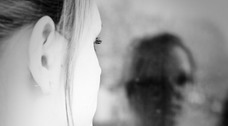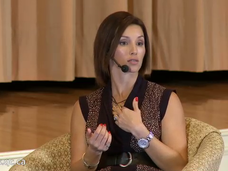
Individuals with anxiety disorders respond very well to treatment and can live satisfying lives and function well at home and at work.
Most anxiety disorders are treated with cognitive-behavioral therapy (CBT), medication, or a combination of the two. A variety of medications can be used in the treatment of anxiety disorders, including anti-anxiety drugs, antidepressants, and beta-blockers. The goal is to change three key aspects of the behavior.
1- Avoidance
Most treatments encourage facing specific rather than avoiding them.
Avoidance of real dangers is good but avoidance of imagined or exaggerated dangers isn’t. It just imprisons you and makes you miserable. There is no point in cheating when it comes to anxiety by trying to avoid it. All you end up doing is confirming to yourself that there was a danger there to begin with. Your goal is simple: Prove to yourself that there is nothing to be afraid of!
Most people with anxiety disorders know very well what is truly dangerous and what is exaggerated. It may not be easy but they must learn to face the ones that are not dangerous. By facing their fears most people with anxiety disorders can overcome them.
This can be done gradually. There is no need to torture yourselves. Just remember one thing. Never leave a situation while your anxiety is high or rising. This will only worsen the fear. If you can’t stay, then back off a little and wait. When you feel better, then you can leave. Better still, go back to where you were when you panicked.
Facing you fears – exposing yourselves to the physical sensations that scare you, or to the places where they normally occur – almost always works. If it doesn’t, it is probably because of what you are thinking. Some people may think that they were just lucky to get through it – “thank God I had someone with me, or my water, or my mints, or my pills, or my facecloth” – or that they succeeded only because it was a good day. The goal is to learn that there was nothing to be afraid of, and not that you were lucky! You did not escape danger. There was none there to begin with.
Remember Pavlov’s dog: It is important to keep one thing in mind when it comes to facing fears. If you have had many panic attacks in certain situations, your body will develop an anxiety reflex. Just like Pavlov’s dog, after a while our bodies develop strong reactions in response to sights, smells, sounds and other sensations associated with our experiences. For example, even if you are no longer worried about panicking in a restaurant, the ambiance, or the smell of the grill, or the sound of glasses clinking, can all trigger panic sensations. It may take many trips back before the reflex begins to extinguish itself. Be patient and don’t be discouraged.
2- Changing the focus of attention

People with anxiety disorders are so worried about their bodily reactions, or of their thoughts, that they are constantly focussing on them. This does nothing except make things worse. As we saw earlier, if we are afraid of our reactions, our anxiety response will kick in and only make them worse.
Think of what happens if you run up a staircase. For a while you will feel strong symptoms similar to a panic – your heart will race, you will sweat and maybe even feel shaky. Yet within a few minutes everything is back to normal. What did you do for those few minutes? Nothing. Your body took care of itself. The same is true when you are anxious. What makes anxiety last are your efforts to control it. By trying to resist anxiety, you are inadvertently feeding it.
Obsessive thoughts work the same way as physical sensations. Everyone has crazy thoughts or images in their minds from time to time. They do not reflect “secret desires” or subconscious drives. They are usually just a reflection of fear. Those who don’t worry about them quickly forget them. Obsessive individuals, on the other hand, constantly try to control them. This feeds anxiety and makes the fearful thoughts worse.
Anxiety is NOT a sign of insanity or of illness. Let your bodies and minds be. They might react to certain situations or thoughts, but they will quickly get back to normal. Do nothing and your body will take care of itself! So will your mind.
3- Changing the perception of loss of control

No matter what we do, we can never be completely safe. Some residual danger will normally remain. If I drive within safe limits I am less likely to die than the speeder, but I can never be sure. If I can live with that, I will be able to drive and function normally. If I can’t live with that and want to be absolutely sure, I’m stuck. I either have to avoid driving altogether, or I have to find some other way to control the threat.
The final target of anxiety management is to change your belief that you have no control. In fact, you have all the control you need, just not as much as you would like.
Ultimately we must learn that anxiety cannot be completely controlled and that it is normal to feel anxious. Bad things do happen. Anxiety helps us control risks and minimize their occurrence. Unfortunately, there are no guarantees. People who have trouble letting go – those who seek absolute control – have a hard time with this reality. Their efforts to ensure safety only backfire. Since nothing can be controlled with absolute certainty, any effort will fall short and make it seem that the danger is closer. This increases anxiety.
A simple truth
There is a simple truth about anxiety disorders that has profound implications – people only panic when they don’t want to, and they never do in situations where it doesn’t matter. This is because the biggest part of anxiety is created by our efforts to control it. By accepting to feel anxious from time to time, the fear of fear – which makes up 95% of the panic – never comes.
Mini-Psych School videos
|
Born to be anxious? Not! (2013) |
|
Need help ?
All requests must first go to the mental health team in your CSSS. You can also contact a crisis centre, the support groups Phobies-Zéro, Revivre, AMI-Québec or choose "Support" from the pull-down menu of the Community ressources.
[Anxiety Disorders: causes and symptoms] [Anxiety disorders: treatments]



